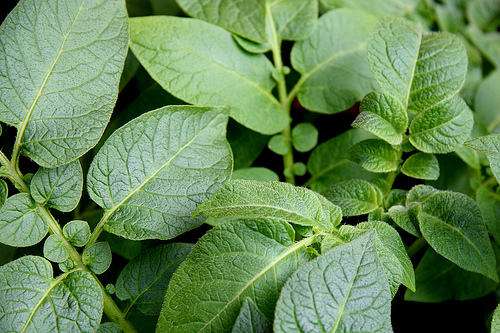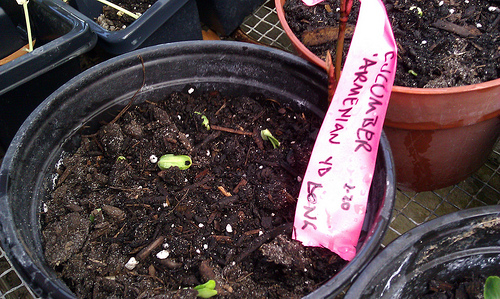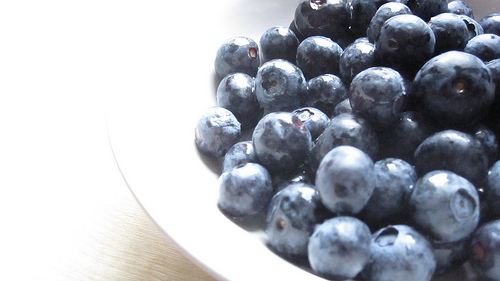Posts Tagged ‘Compost’
The ABC’s of a Homesteading Life

Apples hang low on branches that bend to the ground. Picking time is just around the corner. There’ll be cold crunchy crispness for fresh eating, sliced sweetness in pies and tarts, savory baked apples and “just past prime” apples cooked down and made into an applesauce that is perfect with a succulent roast pork.
Bread rises in the warmth of a kitchen then is pulled hot and fresh from the oven on a holiday morning, smothered in butter or honey or a homemade summer jam. It’s heady aroma filling a quite farmhouse.
Chicks pip and crack, making their way, wet and weak, from the warmth of their eggshell cocoon. They grow plump and fat, peck and scratch the ground, finding bugs and worms while growing into stately layers or succulent roasted dinners.
Daydreams. A cool, late summer evening to celebrate the past and dream of the future; to praise protectors that make it possible for a single mom and a child to live a farm life, at the edge of suburbia with the help of a few good friends, a pen full of lambs and a coop full of chickens.
Eggs hidden in corners and behind bales of hay like small nuggets of buried treasure, waiting to be collected or hatched to replenish an aging flock, or cooked into a hearty breakfast fit for a farm girl.
Fruit trees spread their branches, pushing their blossoms out to become a new year’s crop blushed by the sun and ripened in the heat of summer.
Gardens grow rich and green; tangle and twine through their beds before producing brightly shaped crops perfect for eating fresh, freezing or canning.
Hands dive deep into rich black soil, making way for a fall sowing of seeds. Pulling spent crops, moving manure from coop to compost and from compost to bed.
Imaginations wander, thoughts emerge, ideas form and a town lot slowly transforms into a productive oasis of food and fiber; simplicity and self-reliance.
Jam bubbles and sputters on a red hot stove; releasing its summer juices for a concoction that will remind us of warmer weather on a cloudy winter’s day.
Killing goes hand-in-hand with the raising and growing, providing the family with safe, wholesome food for the year. Prayers go up from grateful hearts for an animal’s good life, which sustains ours.
Lambs jump and frolic, getting strong and fat on good feed. Their fate…to some a cold death, to others a year’s worth of dinners wrapped in paper and stacked in a freezer.
Mason jars line the shelves, gleaming with our brightly colored harvest; enough to feed a family all winter long.
Night time falls silently over our little farm, quietly relinquishing its hard working inhabitants to sleep.
Owls hoot from high in the trees, swooping down to earth anytime a mouse scurries across its path.
Pumpkins gleam in the dusky autumn sun, waiting to transform our farmhouse into a fantasy of fall splendor before being turned into pies and butters and breads and cakes.
Quilts lay out like rainbows over the horizon; pieced together from scraps of fabric or worn out favorites to keep a family warm from the harsh winds of winter.
Rain storms roll through the valley, coming down in sprinkles and showers; downpours and droves, nourishing the parched spoil, renewing life on our little farm.
Season’s change; from the long sunny days of summer filled with fresh eating from the garden to the cool crisp days of fall and harvests put up for winter store to the promise of spring with the turning of soil and the planting of seeds.
Time chases us as we plan and work and move toward a more self-sufficient life, building and planting to live self contained. But, time is also our friend, for life is about the journey and not the destination.
Understanding comes from days working the soil or tending the animals. Old worries, past ambitions, long held desires fade into the distance as new truths take hold and become part of who we are becoming.
Victories abound on our little farm; barns are raised, skills are learned, chicks are hatched, kits are born, lambs grow, gardens produce and animals give their lives to feed a grateful family.
Wash hangs on the line, blowing in the soft breeze, taking in the sweet scent of a contented farm.
X-altation from a life lived simply brings contentment and comfort.
Yarn spun from a harvest of wool; washed and carded and put on a wheel, wraps around clicking needles or flies through the strings of a loom; emerging as hat or scarf or sweater, bringing warmth and comfort to the wearer.
Zucchini’s flourish in compost rich beds; dark green and golden yellow even striped become the base for breads or cookies or muffins; sliced or sautéed or stuffed and baked. They become the center of our meals.
We have come a long way since the first spade plunged deep into the soil; the first animal walked our land. We have much still to learn, but we produce our own crops and raise our own meat. That’s enough.
For now.
Growing Sweet Potatoes in a Tub

The traditional way of growing any kind of potato, whether it be baking, sweet or yam, is to plant slips in long parallel rows, giving the tubers plenty of room to grow. But, on a suburban homestead where the size of your lot dictates your growing space this is not always possible.
 With more crops than space to grow them in we must resort to more and more creative growing methods to produce the food our family wants. Permanent beds of veggies like artichokes, asparagus and potatoes take up valuable space that could be used for root crops, beans, peas or salad greens. On our suburban homestead we have resolved the challenge by growing potatoes in large black tubs. Actually, the tubs use to hold cattle supplements; a mixture of molasses, vitamins and other nutrients used by cattlemen to keep their stock healthy (as seen in this image).
With more crops than space to grow them in we must resort to more and more creative growing methods to produce the food our family wants. Permanent beds of veggies like artichokes, asparagus and potatoes take up valuable space that could be used for root crops, beans, peas or salad greens. On our suburban homestead we have resolved the challenge by growing potatoes in large black tubs. Actually, the tubs use to hold cattle supplements; a mixture of molasses, vitamins and other nutrients used by cattlemen to keep their stock healthy (as seen in this image).
My friend and cattleman, Bill uses about a dozen of these supplement tubs each year and this is the basis of my “potted” potato patch. When the potatoes are harvested, the tubs are cleaned and stored away over the winter, leaving plenty of garden space for other crops.
A few years ago Bill gave me about 10 of these tubs, which measure 24” in diameter and are about 2 feet deep. To make them useable as a planter I drilled drain holes around the bottom every few inches using my 1-inch flat drill bit. When I’m ready to plant my spuds I fill the tub with a mix of good garden soil, well rotted compost and potting soil. Potatoes like a loamy, well-drained soil that is not too rich, which causes the plant to grow more foliage than spuds. As I stir up the mixture I remove any rocks or hard lumpy soil that can damage the growing potatoes. Read the rest of the story »
Changes From Within
We are a small suburban homestead here—a few cloven hooves, a few mixed breed chickens, a rabbit, a garden with fruit trees and berry canes, and two wandering dogs.
The posts that hold the arbor fences also hold the laundry line. The lamb I roast for Sunday dinner is also the lamb that is chopped and sprinkled over kibble. The shells from the eggs I crack into omelets end up in the compost, and scraps of fresh salad greens and veggies are feasts for our feathered ones. So what was once waste, to be thrown into the trash, is now feed for future eggs or chicken salad or turned into garden soil. The system we have is simple, but it serves us well.
There is work yet to be done though; I’d like to have a greenhouse to extend our growing season, a pond with geese and Thanksgiving turkeys. But, for now there is a garden to turn and meat chicks to raise. There are the chores of switching from one season to another, lamb to sell, firewood to lie in and workshops to attend. Without really knowing how, it all seems to fall into place. It all, somehow, gets done.
As I think back on all we have accomplished, I realize that the real work of this farm is not the food we’ve grown or the skills we’ve learned: it’s us. I say this will all sincerity.
When you build a place into your life purpose it changes you; changes how you understand yourself. It humbles you, but not at the mercy of the main intention. There’s no room for ego when there’s a barn full of shit waiting to be shoveled. When I think back over how we have slowly turned an overgrown suburban lot into what we want it to be, I see confidence in who we are, strength in who Brianne will become, but also worries. I never used to think about Brianne going off on her own, wanting to make her own way. I know she wants her own place one day, but I think about how and where and when. I worry about tasks that are beyond my strength, being alone and having time to myself. Certain things subside over time, but some stay raw and exposed.
Maybe that’s just the growing part. Or, maybe this place is teaching me to mind my priorities and let logic win over emotion. I’m not quite sure. I do know one thing I’m happy in this life, feel at home on our little farm with the animals and home cooked meals. I can close my eyes, click my heels three times and settle in.
Perhaps we never really settle down into our lives. Maybe we just have to give our lives time to settle into us.
Bountiful Blueberries
Long before berries were touted for their health benefits and cancer fighting antioxidants I wanted my very own berry patch. Aside from melons, berries are my favorite fruit. Whether it be strawberries on pound cake with vanilla ice cream, blackberries or raspberries in fruit smoothies or blueberries hiding in my Saturday morning pancakes, berries are on my top ten list.
When I moved to my little homestead I vowed that I would have a berry patch, bursting with all of my favorites. It’s taken me awhile, but I finally have, what I think, is the perfect berry patch for a household of two. In the backyard I built two 3’x12’ raised beds. These beds hold the blackberries, Logan berries, red raspberries and golden raspberries. But, it’s the front yard that holds the stars of my lust for berries – BLUEBERRIES!!
After reading an article about edible landscapes I decided that the west facing front planter would be the perfect place for a living, edible hedge. So, two years ago I set out to make it happen. I laid the irrigation line, amended the soil with peat moss and well rotted compost. Blueberries like acidic soil that is rich in matter. When it came time to purchase my berry plants I talked to growers from the farmers market and local farm stands trying to get information about the best varieties for our area.
Then one day, while visiting a friend, I found out that one of my former neighbors had planted a 10-acre test plot with the idea of growing blueberries commercially. I gave Andy a call and picked his brain about growing conditions, fertilizing, watering, production, harvesting and, of course, varieties suitable for our area. It was a mini crash course in berry production and it was great. He was so helpful.
With a little more research on the internet to help me, I decided on two different varieties, three plants each. My new blueberry hedge would consist of O’Neal’s and Sharp Blue. They are both highbush type plants, which means they grow more vertically; perfect for my idea of growing an edible hedge. And, they mature different times of the year, so I would have a relatively consistent flow of berry goodness.
After a few phone calls I was able to find a local nursery that carried both varieties. On a beautiful spring day, under a crystal blue sky we drove the 10 miles to pick up our bushes. I had already told the nursery we were coming and what we wanted, but when we arrived we got the surprise of our lives. When the nursery workers went to the field to get our potted berries they found leftovers from previous seasons and brought them up front in case I might be interested. “Interested” I said, boy was I ever. These were not the ordinary spindly first year plants that home gardeners normally get, but 4-year-old plants that had been forgotten about at the back of the nursery. They were almost 3-feet tall and busting out of their pots.
I took the ones that looked the healthiest, loaded them in the truck and headed home feeling smug that we had gotten so much more than we anticipated. Once home, the planting went fast, and within a few hours the berries were nestled snuggly in their new home.
The harvest that first season was light – the results of transplanting and plant shock, which is normal. But, this season the plants were covered with tiny white flowers, a sign of things to come. The O’Neal’s will be harvested in June followed by the later maturing Sharp Blue. We should have enough berries for fresh eating, with plenty to freeze for winter use or for making into jam. No matter what, we will be in blueberry heaven.
If you see a blueberry patch in your future, check out these useful resources.
http://extension.oregonstate.edu/catalog/html/ec/ec1304/
http://www.motherearthnews.com/Real-Food/Growing-Blueberries.aspx
http://www.hgtv.com/landscaping/growing-blueberries/index.html
If you’re not ready to plant your own patch, buy fresh berries at the farmers market and enjoy their burst of flavor all season long. Pick up an extra pint and try this luscious recipe, one of our favorites from the Iroquois Hotel on Mackinac Island.
Blueberry-Lemon Muffins
(makes 18 large or 36 small muffins)
INGREDIENTS
2-2/3 cups all-purpose flour
1 Tbsp baking powder
1-1/2 tsp salt
2 eggs
1 cup milk
2/3 cup cooking oil
1-1/2 cups fresh or frozen blueberries
½ Tbsp lemon zest
GLAZE:
4 Tbsp butter
½ cup sugar
Grease or coat muffin tins. Preheat oven to 400 degrees.
Into a mixing bowl sift flour and other dry ingredients.
Into a small bowl crack and beat eggs with a wire whisk for 10 seconds. Add the milk and oil to eggs and stir to blend. Make a well in the flour and pour in the egg-milk mixture. Stir as little as possible to moisten the flour. Set the batter aside for a moment.
Combine blueberries with lemon zest, and fold the berry mix into the muffin mix. Again stir gently and as little as possible. Spoon batter into muffin tins to ¾-full.
Place muffin tins into oven and set the timer for 20 minutes. It may take an additional 5 minutes to become golden brown. Check at 15 minutes, and if they are browning too quickly, move to the bottom rack of the oven.
While the muffins are baking, melt butter in a small saucepan. Pour the sugar into a small shallow bowl easy for dipping.
When the muffins are finished, cool for 5 minutes. Run a knife around the edges of each. Tilt and gently lift each muffin from the tin.
Dip the top of each muffin lightly in the butter and then in the sugar. The muffins can be held overnight and reheated for eating. They can also be frozen, but fresh is always best.
Make Your Own Garden Trellis
Hint & Tip
Make your own garden trellis
Before you chop up grape cane or berry vine pruning’s for the compost, consider saving them to make your own garden trellises.
Simply pull off any leaves and scrap off the thorns and you have the perfect material for making trellises that can be used for vining peas, beans or even small cucumbers.
Before the canes dry completely, take several sturdy straight pieces for the uprights, then twine the remainder around the uprights in the diameter you want. Leave room at the bottom so the trellis can be pushed into the soil.
Once finished, tie the intersections to hold the trellis together. Vine trellises will last a few seasons and can then be chopped up and composted. You’ll save money on buying premade- trellises and your garden will have a fine country feel with natural made trellises.
(if you don’t have grapes or berries on your suburban homestead you can also use small diameter saplings)



 Cities all over the world will be celebrating Earth Day 2009 throughout the month of April. Although each city celebrates in their own and unique way, most focus a great deal on gardening, self-sufficient living, energy efficiency, composting and the like.
Cities all over the world will be celebrating Earth Day 2009 throughout the month of April. Although each city celebrates in their own and unique way, most focus a great deal on gardening, self-sufficient living, energy efficiency, composting and the like.
Recent comments
Aenean nonummy hendrerit mauris. Phasellus porta.